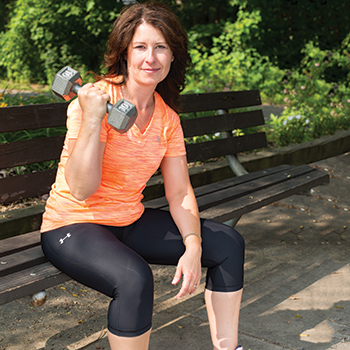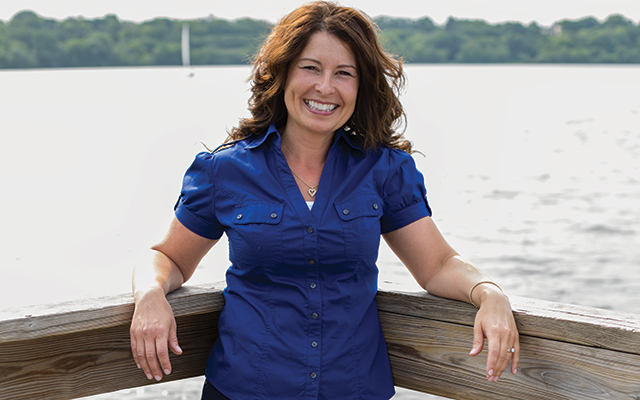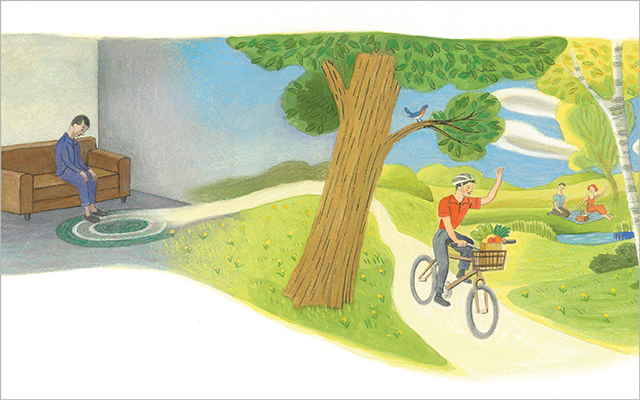Imagine a quiet, Shirley Temple–like little girl transforming into a devil-child sporting skull T-shirts. In many ways, I was a typical 1980s teen: sleeping till noon, watching hours of MTV, dining on junk food. But for me, something unexpectedly dark was lurking around the corner.
As frustrations with home and school began to build, my solution was to rebel and escape. I became a disrespectful teen, breaking rules and skipping school.
Smoking cigarettes led to drinking alcohol, which led to marijuana, pills, cocaine, and more unruly behavior. I developed a nasty habit of running away from home. When I was home, my door-slamming skills often shook our house. Friends were fellow rebels, and the consequences of our behavior led me deeper into misery.
In the Shadow of Sadness
As dark feelings began to overtake me, I embarked on a journey to hell and back.
I remember often lying in bed, tears streaming down my face, sobbing into my pillow. Sometimes I didn’t even have the energy to cry, only to lie there feeling helpless and sinking deeper into the abyss.
My insecurities, low self-esteem, and mood swings became overwhelming, and I asked God why this was happening to me. At 13 years old, I wanted it to stop so much that I was willing to end my life. One day my mother walked in when I was ready to ingest a handful of pills. The fright I saw on her face is unforgettable to me.
Soon after, I was admitted to a mental-health facility and diagnosed with depression.

At times, I wanted to be alive and I enjoyed life, but then I would fall into the black hole again, feeling powerless. There were many more suicide attempts — some no one ever knew about because I was too ashamed to tell.
Along with mental-health care that included therapy and antidepressants, I also went through chemical-dependency treatment. During one program that lasted eight months, I was introduced to therapeutic recreation, a treatment that uses activity or creative arts to restore and rehabilitate individuals with illness or disability.
Can you imagine persuading defiant, cigarette-smoking teenagers to exercise?
Our program focused on physical fitness, and participation was required, so I chose weightlifting. When I returned home, I was given my own set of weights, and my new escape became pumping iron while cranking ’80s rock on my boom box.
In a few short months, I improved my self-esteem while also building muscles and shedding pounds.
Facing an Eclipse
Even though therapeutic recreation helped me, at 16 I relapsed. This provoked my last, most haunting suicide attempt, which left me comatose for two days.
Regaining consciousness, I was confused, ashamed, and angry to be alive. But as I listened to my family tell me how devastated they had been to discover my unresponsive body, and how scary it was for them to hear I might not recover, I began to realize how hurtful my actions had been — and how lucky I was to be alive.
And I truly wanted to be alive.
Following my final mental-health and chemical-dependency treatments, I picked up the weights again and got my sobriety back on track. I graduated from high school and later earned a legal-secretary degree.
Finding My Way Forward
Now, at 41, I’ve been free from addictions and depression for more than 20 years. In my 30s, I exercised consistently, but as I approached 40, I became frustrated with weight fluctuations. Finally, I made a decision to be healthy and not worry about being skinny.
Even though burgers and fries were my weakness, I started indulging in them less frequently, choosing to eat more vegetables and fruits instead. Each day I tracked my meals and exercise. I didn’t see it as a diet. Rather, I was changing my lifestyle and habits.
The healthier I became, the more my strength and motivation rose, and I soon discovered I had potential for even more.
[callout]The healthier I became, the more my strength and motivation rose, and I soon discovered I had potential for even more.[/callout]I’ve been able to maintain my weight for the past two years, despite some real challenges.
In 2012, someone close to me succumbed to depression and attempted suicide. The trauma of finding a loved one unconscious brought past feelings rushing back, and I felt my depression trying to suffocate me again. It was an unforgettable day — not only for the shock, but because I made a pact with myself to fight and not let the darkness win again.
A Brighter Future
The fear of my depression returning and the sorrow I was experiencing led to crippling anxiety and sleepless nights. I’d wake up from nightmares, my stomach in knots, my heart racing. I dreaded facing the world. I had to keep telling myself: Get up and fight.
This time I leaned on my strong faith and trust in God. I found peace in prayer and comfort in listening to Christian music.
To help reduce my stress and anxiety, I increased my workouts to four times a week and made each workout more intense. With the confidence I gained through increased exercise, I took on the challenge of running, something I thought I could never do. I hated it as a kid and dreaded that painful one-mile run in gym class, always being one of the last to finish.
At first, I ran slowly to build endurance. I found myself feeling energized, and when feelings of sadness returned, I allowed the tears to stream down my face. Instead of the desperation I’d previously experienced, I felt a sense of release and freedom.
My next goal was to run a 5K, and I chose the Emotions in Motion 5K for the organization Suicide Awareness Voices of Education. Not only did I run to support suicide awareness, I ran for myself and the person dear to my heart who is still fighting a battle.
Crossing the finish line was such an exhilarating moment: I remember a flood of emotion, crying and feeling such joy as I saw my husband and biggest supporter waiting for me with open arms.
Taking on new fitness challenges and staying healthy has given me self-assurance. The experience of a painful adolescence taught me that suffering can make us stronger — and that I can overcome anything. I’m grateful for my amazing support system, which has been instrumental in keeping me out of the black hole.
I beat the darkness through faith, healthy eating, running, and weights. I just keep on lifting them — with that old ’80s rock still blaring in my ears.
Success Summary

Meet: Jenni Engebretson, 41, a legal assistant who lives in Chanhassen, Minn., with her husband, Kevin. They have three children: Kyle, Rachel, and Jeff.
Big Achievement: Overcoming depression, addiction, and suicidal tendencies.
Big Inspiration: Her desire to live, rebuild her confidence, and take on new fitness challenges. Listening to encouraging music such as Mandisa’s “Overcomer.”
What Worked: Having a strong faith. Challenging herself to achieve things she thought were never possible, like weightlifting and running a 5K.
What Didn’t Work: Negative thinking and putting pressure on herself to be a certain weight.
Words of Wisdom: “Have compassion for yourself and embrace your individuality.”




This Post Has 0 Comments